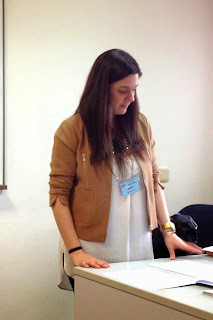One of our active members, Despina Karamitsou, delivered once again a brilliant talk entitled "Teaching out of the book" at TESOL Macedonia-Thrace, Northern Greece’s 22nd convention entitled "Back to Basics", on Saturday 28th March 2015.
Photo by Margarita Kosior
It tied in well with the general theme, as she presented some excellent easy to set up activities for primary school children; activities, requiring limited resources and preparation time but involving a lot of hands-on learning, enthusiasm and unlimited fun.
The only prerequisites needed are energy, and willingness to step outside the confines of the textbook or even the classroom. They involved TPR, teamwork, creativity and more. Ideas like creating thematic lapbooks and dioramas to setting up relay races which not only promote language learning but also an awareness of various environmental issues like the importance of conserving water.
Despina also shared her wonderful ideas at the seminar organized by the Larissa English Teachers Association, so that our colleagues who were not able to attend this year’s conference could get a taste of what being a member offers to professionals.
I would like to thank Despina for her devotion and eagerness to contribute and I anxiously await to see her in action again.

Photo by Aphrodite Gkiouris
By George Topalis




